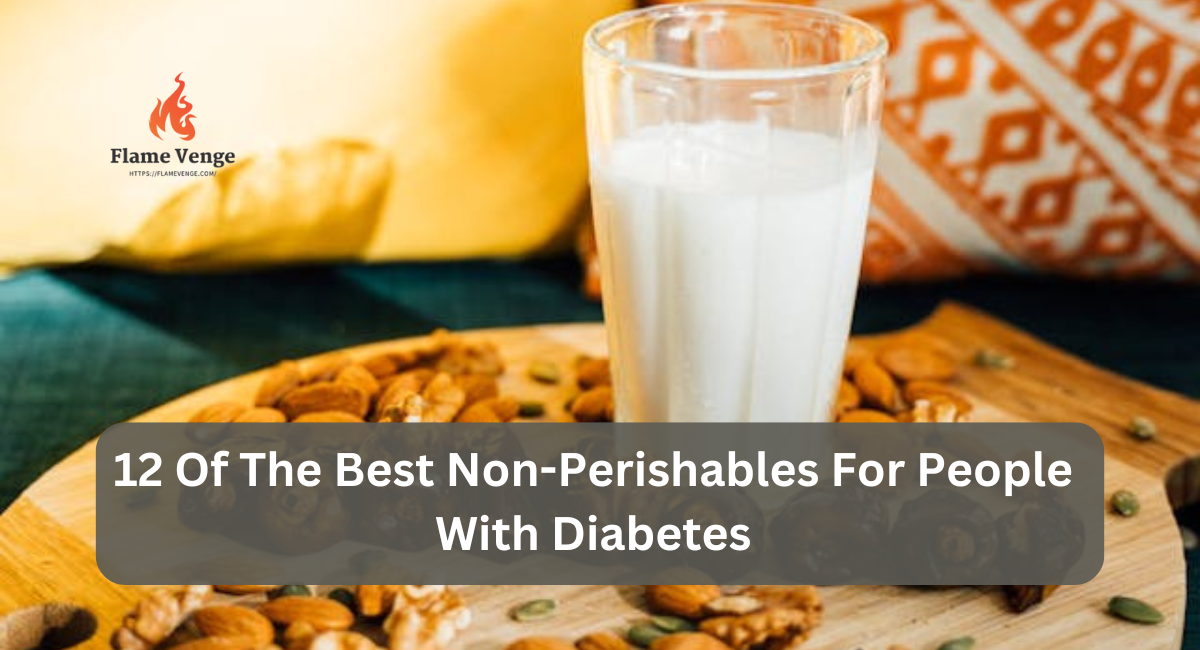When managing diabetes, maintaining a balanced diet with the proper nutrients is essential to keep blood sugar levels stable. Non-perishable foods are beneficial because they have a long shelf life, making them convenient for stocking up without frequent trips to the grocery store. Here’s a comprehensive guide to 12 of the best non-perishable foods for people with diabetes:
1. Canned Beans
Canned beans like black beans, chickpeas, and lentils are a great way to get protein and fiber from plants. They also have carbs that are good for you. These nutrients can help keep your blood sugar levels stable by making sugar absorb more slowly into your body. Beans are versatile and can be added to soups and salads or used as a base for various dishes. Opt for low-sodium or no-salt-added varieties to keep sodium intake in check.
2. Steel-Cut Oats
Steel-cut oats are a tremendous non-perishable option for breakfast or snacks. Unlike instant oats, steel-cut oats have a lower glycemic index, meaning they cause a slower rise in blood sugar levels.They have a lot of soluble fiber, which can lower cholesterol and improve heart health. This is important for people with diabetes. Store in an airtight container to extend their shelf life.
3. Canned Tuna or Salmon
Canned tuna and salmon are rich in omega-3 fatty acids, which benefit heart health. These healthy fats can decrease swelling and make insulin work better. Eating tuna and salmon, which have lots of protein, can make you feel full and help you control your weight, which is important for managing diabetes. Pick fish in water instead of oil to keep calories down.
4. Quinoa
Quinoa is a healthy grain with lots of protein and fiber, making it a good alternative to white rice. It won’t make your blood sugar go up quickly. Quinoa also has magnesium, which helps your body use insulin better. You can keep quinoa in a cool, dry place and use it in salads, side dishes, or main meals.
5. Chia Seeds
Chia seeds have lots of good stuff in them like fiber, protein, and healthy fats. When added to liquids, they expand and form a gel-like consistency, which can help keep you full and prevent overeating. The fiber in chia seeds is particularly beneficial for slowing digestion and stabilizing blood sugar levels. You can sprinkle them on yogurt, put them in smoothies, or use them to make chia pudding.
6. Canned Tomatoes
Canned tomatoes are versatile in various dishes, from soups to sauces. They are rich in antioxidants, particularly lycopene, which has been linked to a lower risk of heart disease—an essential consideration for those with diabetes. When choosing canned tomatoes, look for options without added sugars or salt.
7. Nuts
Nuts like almonds, walnuts, and pistachios are great non-perishable snacks that provide healthy fats, protein, and fiber. These nutrients help control blood sugar and reduce heart disease risk. Nuts are calorie-dense, so it’s essential to consume them in moderation. Store them in a cool, dry place to extend their shelf life, or keep them in the fridge for more extended storage.
8. Brown Rice
Brown rice is a whole grain that provides more fiber and nutrients than white rice. The fiber in brown rice makes it take longer for your body to break down, so glucose is released into your blood more slowly. This makes it a better choice for managing blood sugar levels. Brown rice can be cooked in many different meals, like stir-fries and grain bowls.
9. Peanut Butter
Peanut butter is an easy & delicious way to get good fats, protein, and fiber. These nutrients can help keep your blood sugar levels steady and make you feel full for a longer time. When choosing peanut butter, look for natural options with no added sugars or hydrogenated oils.
10. Dried Lentils
Dried lentils are another excellent source of plant-based protein and fiber. They cook relatively quickly compared to other dried legumes and can be used in soups, stews, or salads. Lentils have a low glycemic index, making them a good blood sugar management option. Keep dried lentils in a cool, dry place, and they can stay fresh for a long time.
11. Pumpkin Seeds
Magnesium-rich pumpkin seeds are a healthy snack., which is essential for regulating insulin levels. They also provide protein, healthy fats, and fiber, making them a well-rounded snack for people with diabetes. Pumpkin seeds can be eaten alone, put in salads, or sprinkled on yogurt or oatmeal. Keep them in a sealed container to keep them fresh.
12. Shelf-Stable Almond Milk
Shelf-stable almond milk is a low-calorie, low-carbohydrate alternative to dairy milk. It’s really good for people who can’t digest lactose or want to eat fewer carbs. Unsweetened almond milk has a minimal impact on blood sugar levels & can be used in smoothies, cereals, or coffee. Please keep it in a cool, dry place until opened, after which it should be refrigerated.
Incorporating Non-Perishable Foods into a Diabetes-Friendly Diet
When incorporating these non-perishable foods into your diet, it’s essential to consider portion sizes & overall meal balance. Combining these foods with fresh vegetables, lean proteins, and healthy fats will help create balanced meals that support blood sugar control.
For example, a simple meal could include:
- A serving of brown rice.
- A portion of canned tuna mixed with canned tomatoes and spices.
- Steamed vegetables.
You might enjoy a small handful of nuts or a tablespoon of peanut butter spread on whole-grain crackers for a snack.
Staying hydrated is also crucial for managing diabetes, so drink plenty of water throughout the day. While these non-perishable foods are convenient and nutritious, they should be part of a broader diet that includes fresh produce and other whole foods.
Conclusion
Managing diabetes involves making informed food choices, and stocking up on these 12 non-perishable items can provide you with a range of options that support stable blood sugar levels & overall health. By adding these foods to what you eat, you can always have diabetes-friendly possibilities, even when fresh produce isn’t available.

